Tan tan ramen is my recent addiction. I love this soup! But it proved challenging to make it perfect for my taste. The first attempts using various recipes produced soup that was too spicy for my Western palate and/or tasted inauthentic and dull. I experimented a lot and came up with a version of tan tan ramen that is absolutely fantastic and, dare I say, better than even the authentic versions that I have tried at restaurants. I hope you'll enjoy it too.
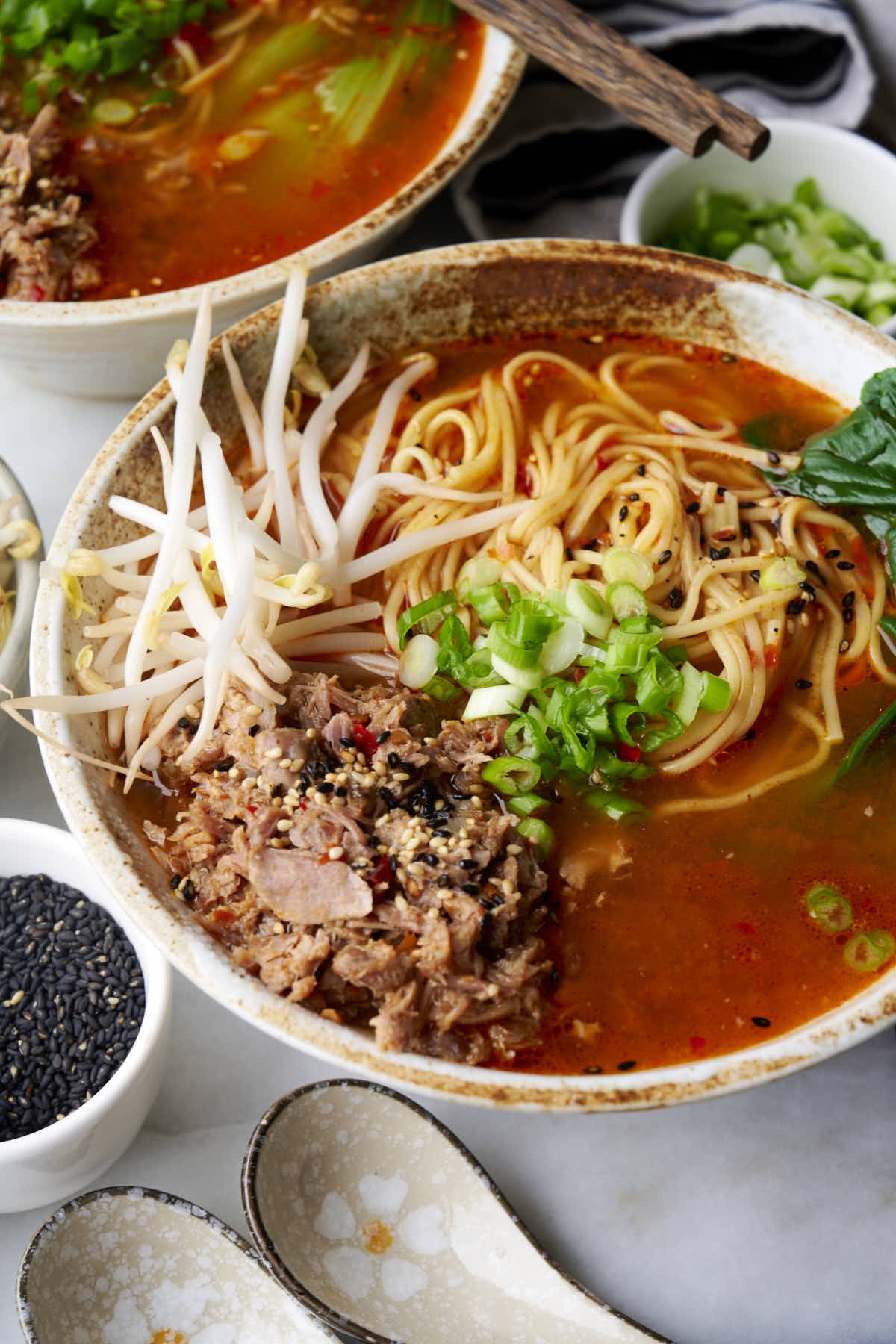
How is my version of tan tan ramen different?
I'll tell you how.
- I use real pork bone broth (tonkotsu), which is what defines the taste of this fantastic soup. No chicken broth or other cheap substitutes like many online recipes call for.
- I use pork neck bones to make the broth. These bones have a lot of meat on them, which I use instead of ground pork. This meat has that tender and succulent pulled pork texture.
- I brought the spice level down, but it still has that authentic taste. Many recipes make a ridiculously spicy ramen that practically no one in my family can eat.
- I use authentic ingredients to make the real deal soup. You can easily find them, don't worry. No peanut butter or other sub-par substitutes.
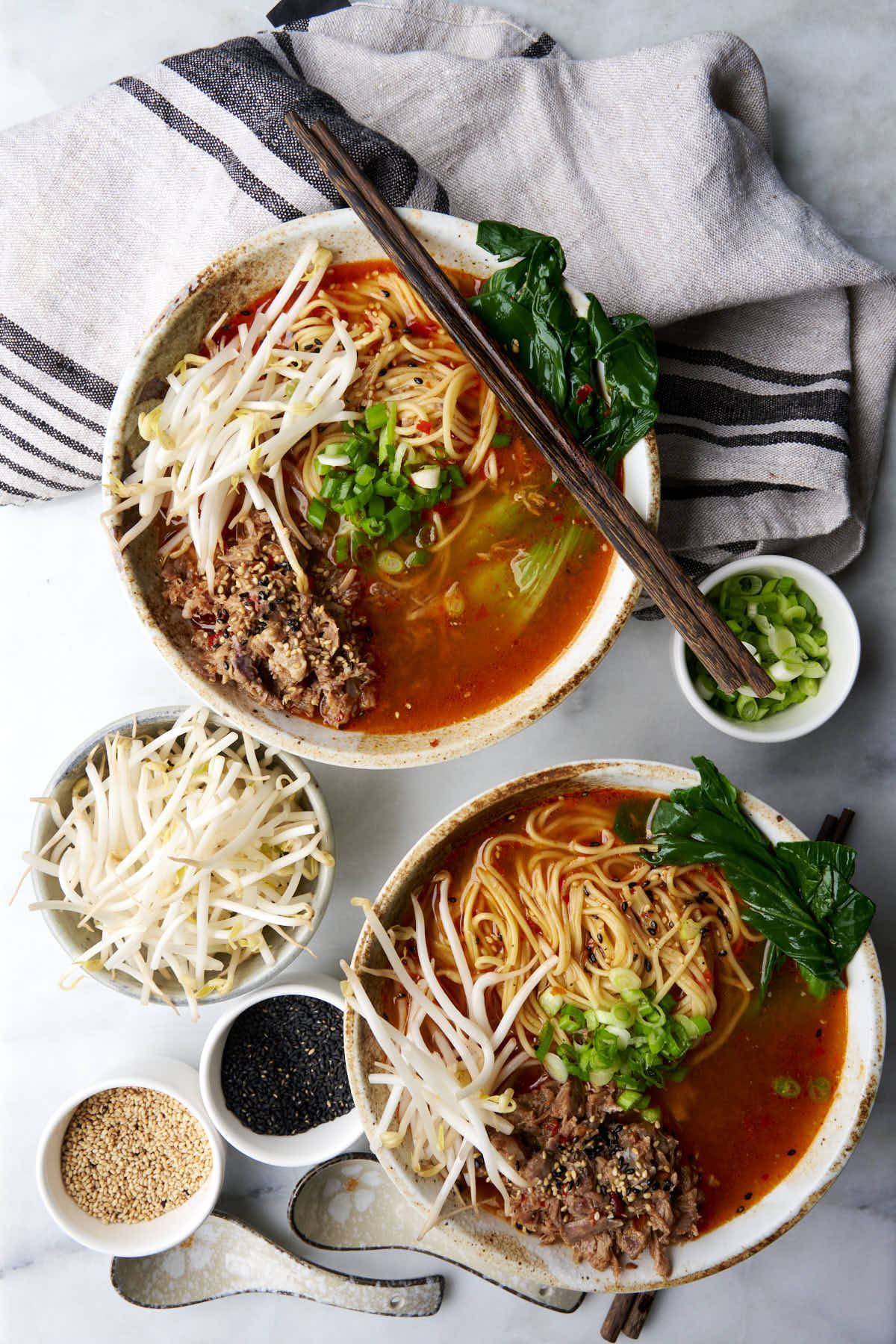
What is tan tan ramen?
Tantan ramen, also known as tan tan ramen, or Tantanmen, is a Japanese ramen dish that is an adaptation of the Chinese Sichuan dish, dan dan mian. It consists of ramen noodles served with the characteristically rich, creamy, and spicy broth, seasoned with sesame seed paste, chili oil, and spicy bean paste called doubanjiang. The common toppings include spicy ground pork, leafy greens or bok choy, scallions, and bean sprouts.
How to make it?
The broth
The taste of tan tan ramen is defined by tonkotsu - pork bone broth. If you want to taste this soup's real, authentic taste, DO NOT SUBSTITUTE IT! No chicken broth, please! No canned broth either!
Making tonkotsu can be very time-consuming, but I've learned that you don't need to boil the bones for 12 hours to get a delicious pork bone broth. Two to three hours is enough. It's nearly identical to the broth I make for one of my all-time favorite soups - Ukrainian borsch.
While this may sound like a lot of time, this is 95% hands-off. All you need to do is fill a large pot with water, add the bones and the seasonings, and simmer them on low for 3 hours. That's it. The broth can be made ahead. You can even freeze it for longer storage.
The meat
Your typical tan tan ramen is topped with fried ground pork, which is good, albeit a little dry, but we can do better.
I use pork neck bones, which every Asian store sells. Just ask them to cut them into 2" pieces for you. The cool thing about these bones is that they come with a lot of meat. Pork neck meat. You know, the one they make capicola from. The one that competition BBQ pit masters call 'the money muscle.' The one that makes the tastiest smoked pulled pork. Yeah, this meat is unbelievably tender and makes this soup really shine.
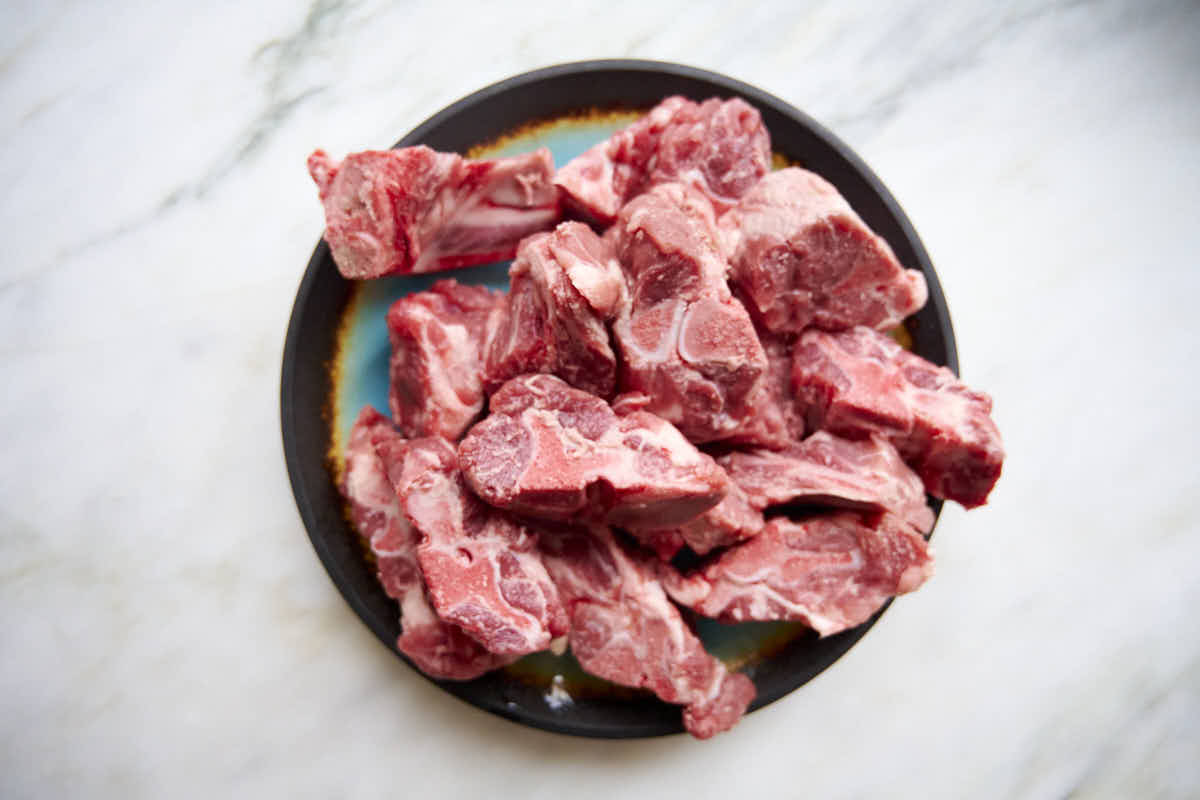
Once the bones are done boiling, I let the meat cool down a little and pull it off the bones. It slides right off. So tender! Way better than ground meat! I cannot believe I've never seen anyone do it!
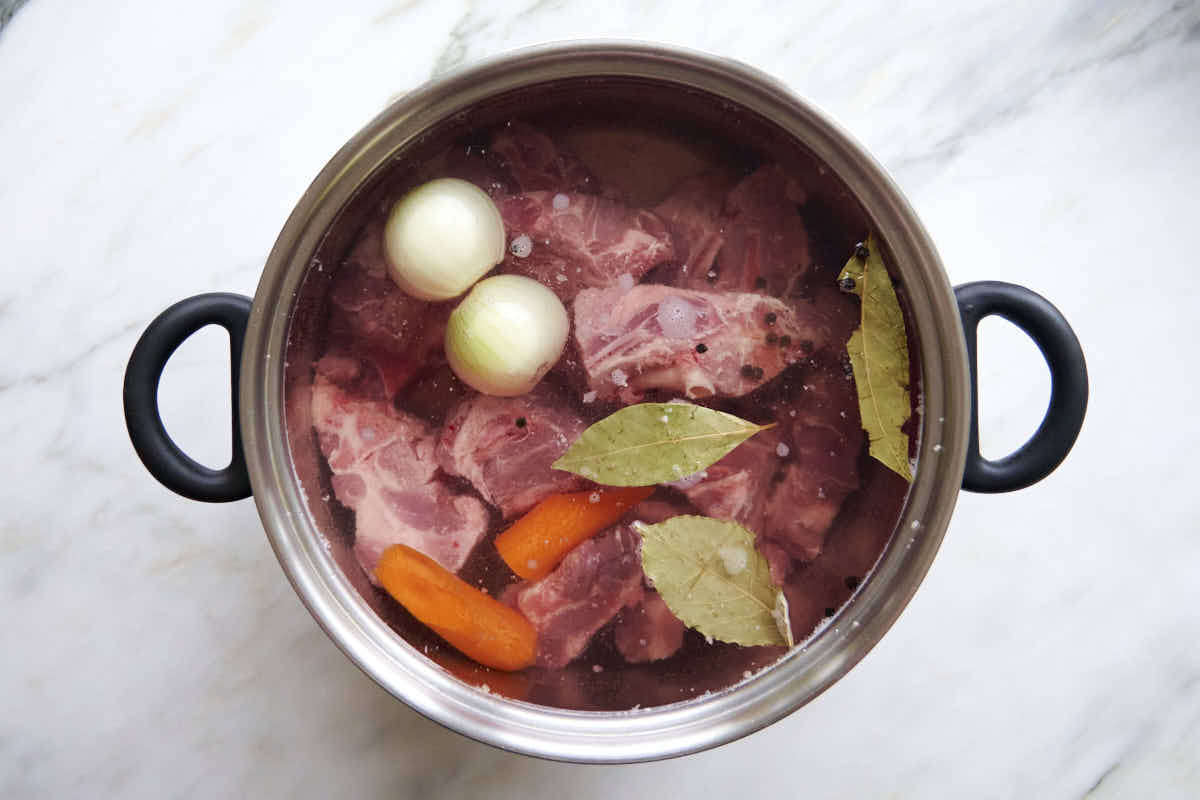
I get over a pound of meat from 3 pounds of neck bones.
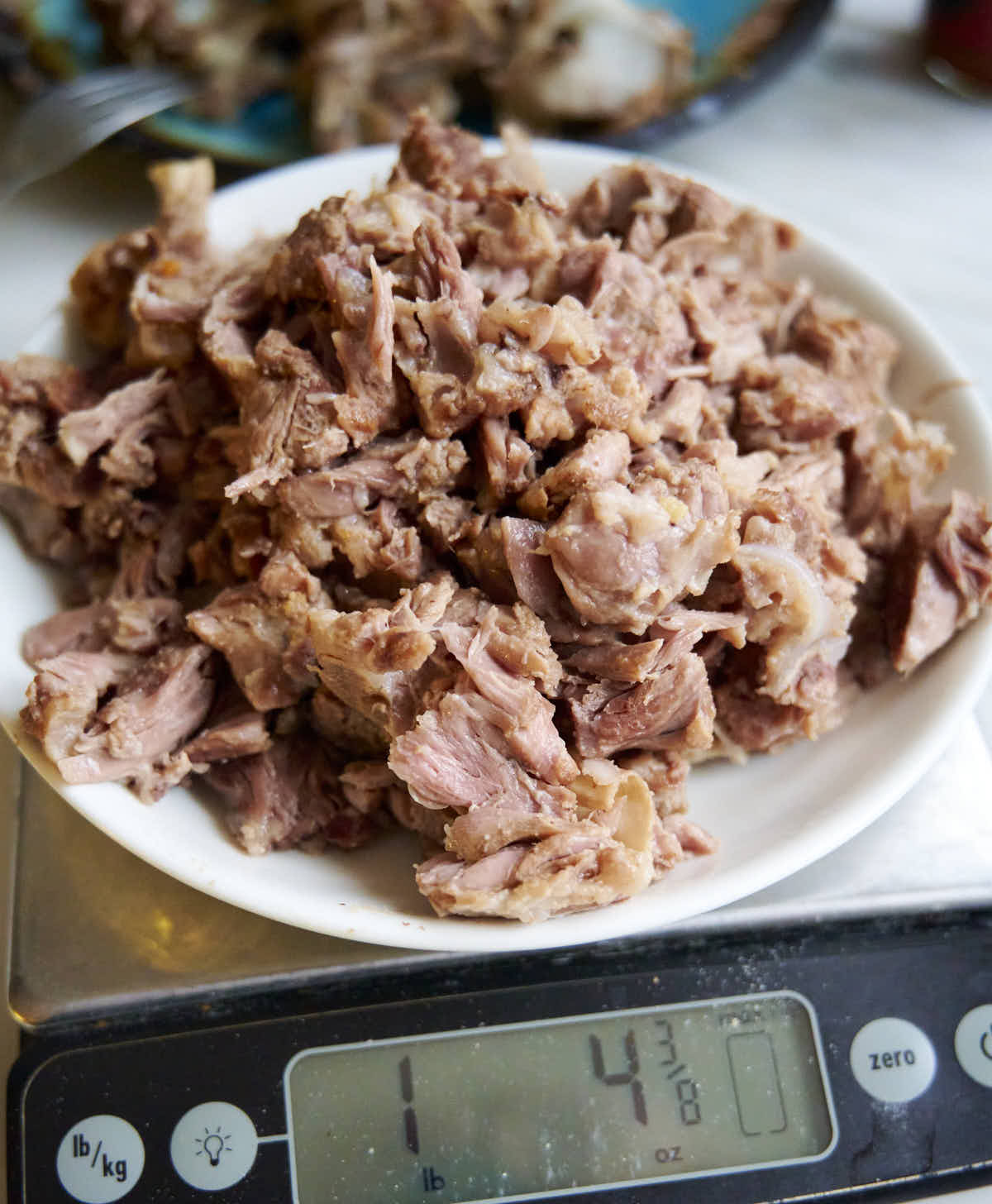
The seasonings
I strongly believe that you can't substitute doubanjiang (bean and chili paste) and sesame paste. They add that authentic flavor. And just like tonkotsu, the soup doesn't taste the same without them. The good news is that, in my experience, both can be found at most Asian grocery supermarkets. If you don't have one nearby, Amazon sells both doubanjiang and sesame paste.
I found that different brands of doubanjiang may taste quite differently, so experiment and find which one you like the most.
Sichuan peppers, especially freshly toasted, also add a lot of flavor. However, I feel like you can easily skip them, as doubanjiang usually has them.
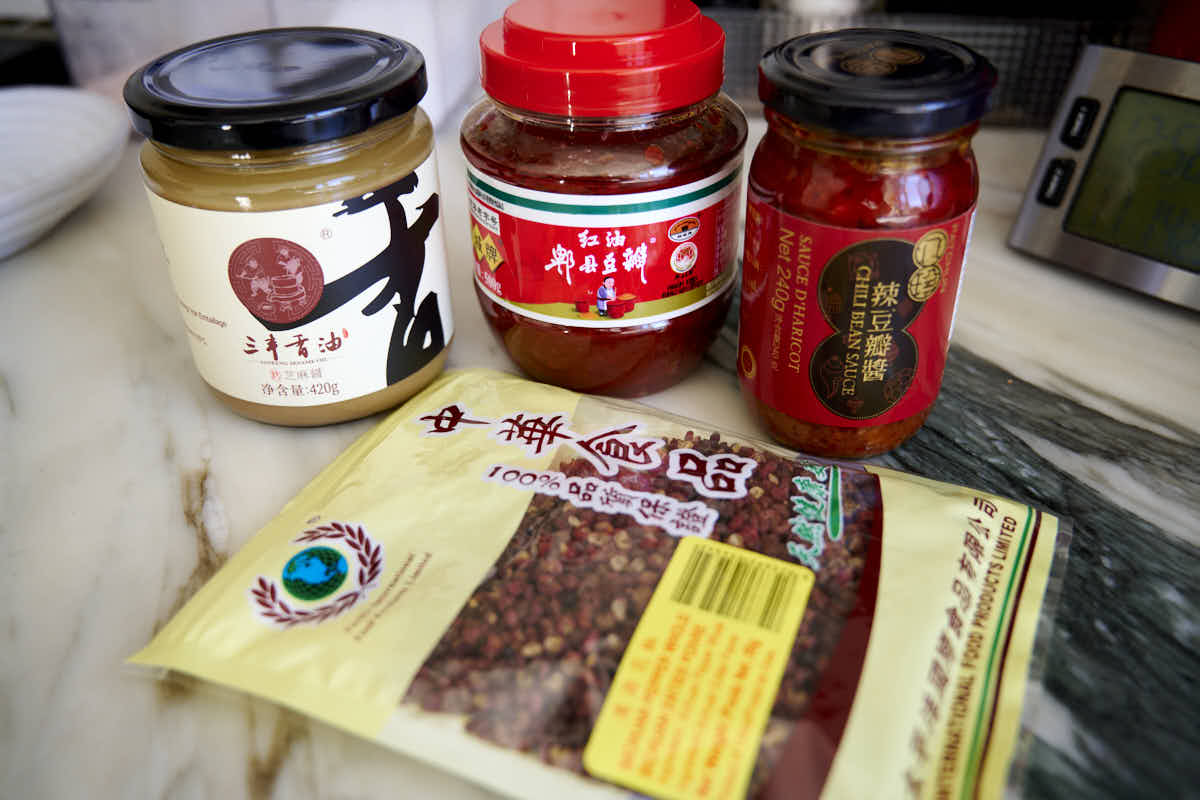
The ramen noodles
I've seen many ramen recipes recommending cooking ramen noodles in boiling broth. It will flavor the noodles. Great idea! Well, I am not sure about that. Ramen noodles come covered in starch. Once you cook them in your broth, the broth becomes thicker. You can almost taste the starch in it. No bueno. I'm not too fond of it.
So, my recommendation is to cook ramen noodles separately.
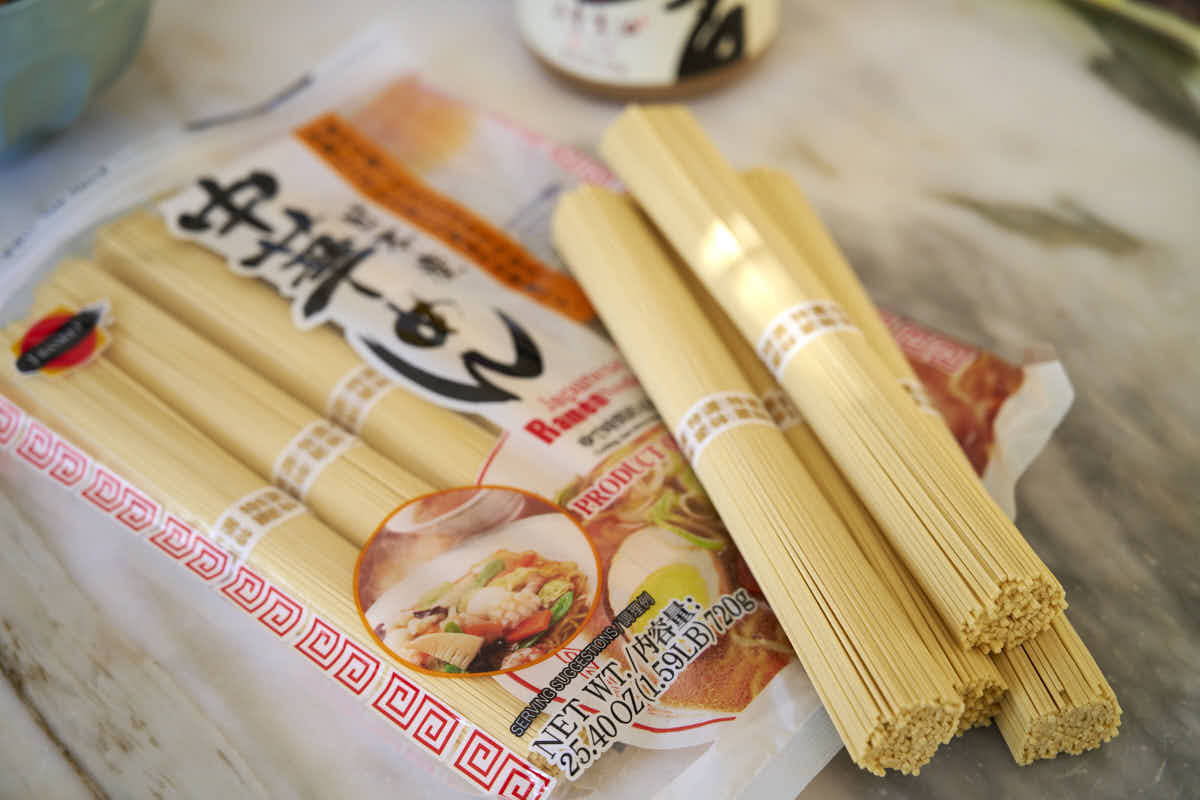
The toppings
First and foremost, many recipes call for seasoning each bowl with one to two teaspoons of chili oil. I once seasoned my bowl of ramen with two, and I could not eat it—way too hot for my palate. There is more than enough heat in the chili and bean paste, so no additional chili oil is necessary. Topping your soup with a little bit of sesame oil is enough as far as I am concerned.
Blanched baby bok choy is a must in this soup, in my opinion. One per bowl is not enough. Two to three are optimal.
Bean sprouts are the typical topping for this soup, but I add them only half the time. I'd rather have bok choy and green onions in my soup. Yes, always add green onions.
Sesame seeds. I add them because I always have them. Both black and white. Though, I feel like you can skip them and won't miss them much.
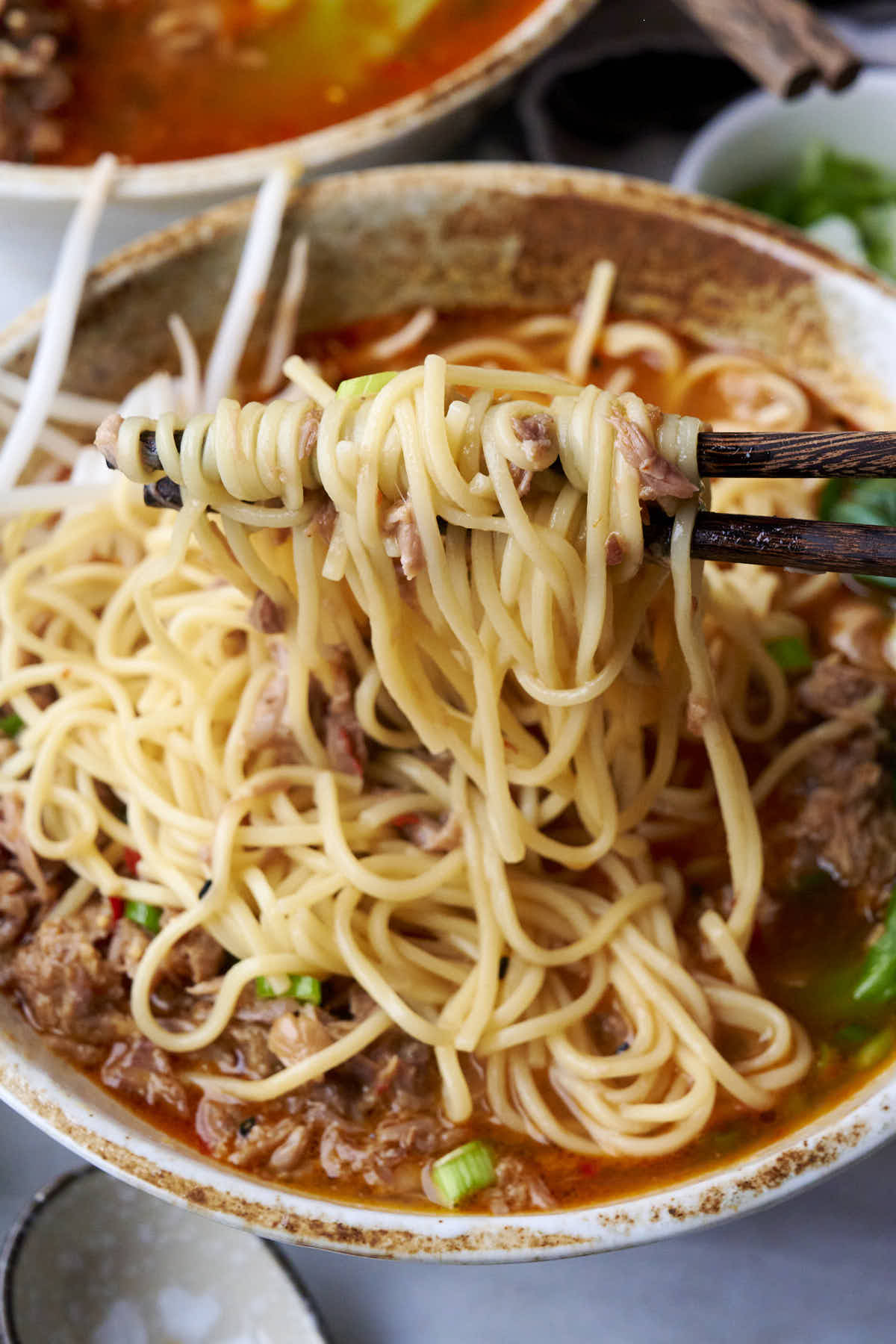
Enjoy!
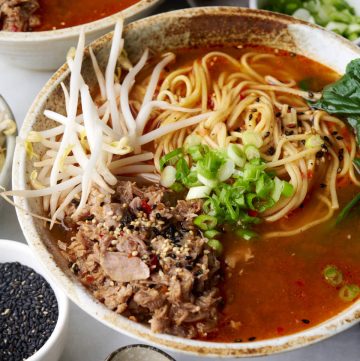
Tan Tan Ramen - A Much Improved Version
Ingredients
For the pork bone broth (Tonkotsu)
- 3 lbs pork neck bones cut into 2" pieces; you can roast them prior to boiling for more flavor but it's not essential.
- 16 cups water
- 1 medium onion peeled and cut in half
- 1 medium carrot peeled and cut in half
- 1 Tbsp peppercorns whole
- 3 bay leaves
- 2 tsp kosher salt add more to taste, if needed
For the doubanjiang mixture
- 3 Tbsp doubanjiang fermented chili and bean paste (see notes); add more if you like a little bit more heat.
- 2 Tbsp Japanese sesame paste
- 1 tsp Sichuan peppercorns toasted and ground, optional
- 1/2 tsp ground white pepper
For ramen
- 10 cups tonkotsu (pork bone broth)
- 2 cups bean sprouts
- 1 lb pork meat pulled from the bones
- 10 baby bok choy
- 2 garlic cloves pressed
- 2 Tbsp minced fresh ginger
- 4 scallions thinly sliced on the diagonal
- 10 oz ramen noodles dry
- 3 tsp sesame oil
- 4 tsp sesame seeds white, or a mix of white and black
- chili oil optional; 1/4 - 1/2 teaspoon for medium heat to 1 - 2 teaspoons for a lot of heat per bowl.
Instructions
- Place the pork bones, carrot, onion, peppercorns, and bay leaves in a large pot. Add 16 cups of water and bring to a boil. Reduce the heat to medium. Skim off and discard any brown foam that rises to the top. Turn the heat down to very low, cover with a lid, and simmer for about 2.5-3 hours.
- Take the bones out, let them cool down, then pull the meat off the bones and shred.
- Strain the broth through a fine mesh sieve and set aside. The broth can be made in advance and refrigerated overnight.
- In a medium bowl, stir together the doubanjiang, sesame paste, Sichuan peppercorns, and white pepper.
- Next, measure the broth. You should have 10 cups. If not, top up with drinking water and bring it to a boil. When the broth is boiling, lower the heat to low, add baby bok choy, and cook for 2 minutes. Remove the bok choy and set it aside. Add half the doubanjiang mixture into the broth, stir, and remove it from the heat. Stir in the kosher salt. Taste and add more if desired.
- Heat a large skillet over medium heat. Drizzle two teaspoons of sesame oil, add the shredded pork, garlic, ginger, and half the scallions. Cook, stirring, for one minute. Stir in the remaining doubanjiang mixture and three tablespoons of pork broth, and cook, stirring, for one minute more. Remove the pan from the heat.
- Meanwhile, fill a medium pot with water and bring it to a boil. Cook ramen noodles as per package instructions.
- Divide the noodles between the serving bowls. Ladle the broth on top of the noodles and then top each with an equal portion of the bok choy, pork, and bean sprouts. Garnish with a dash of sesame oil, scallions, and sesame seeds. Drizzle with some chili oil if you want more heat.
Notes
Nutrition


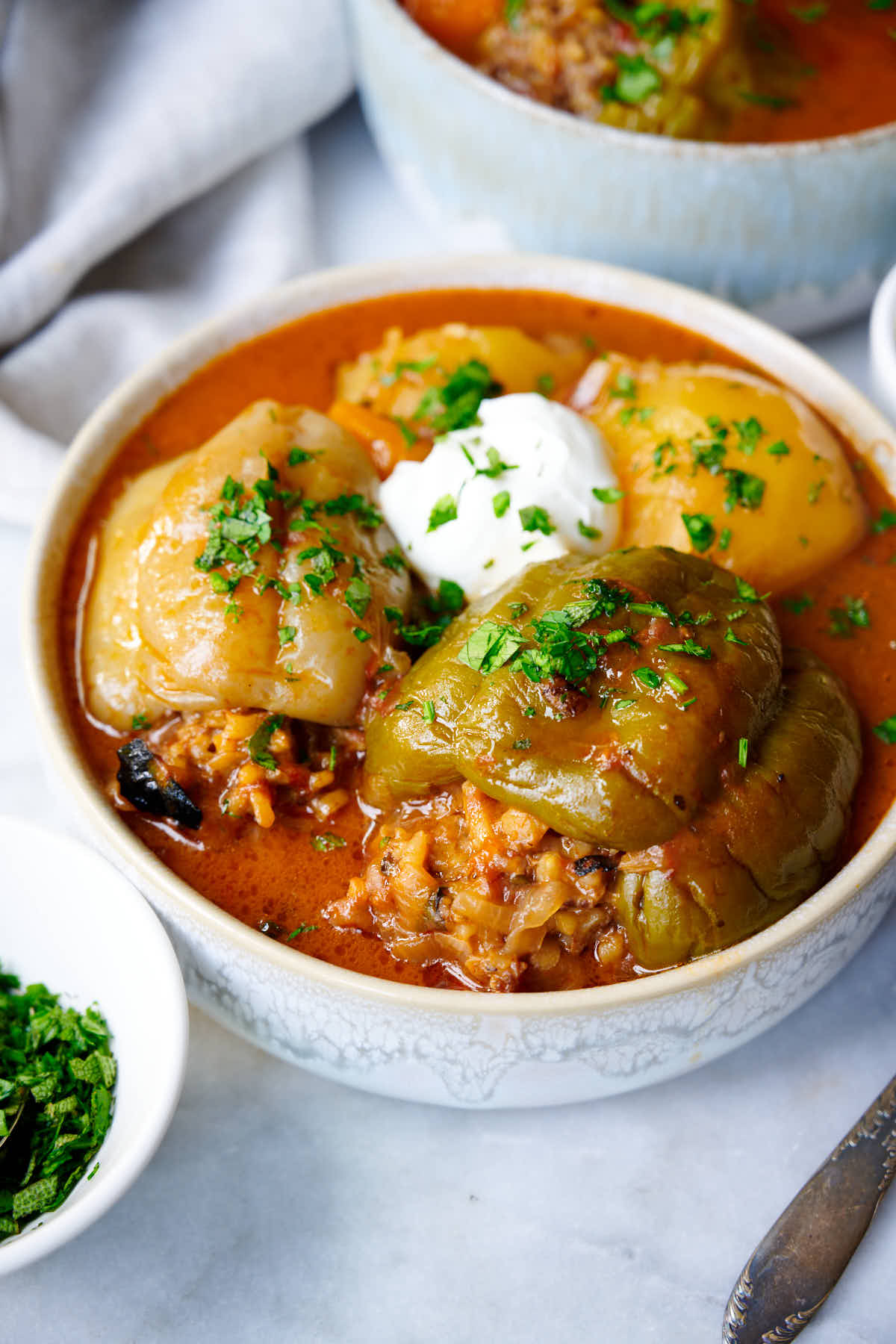

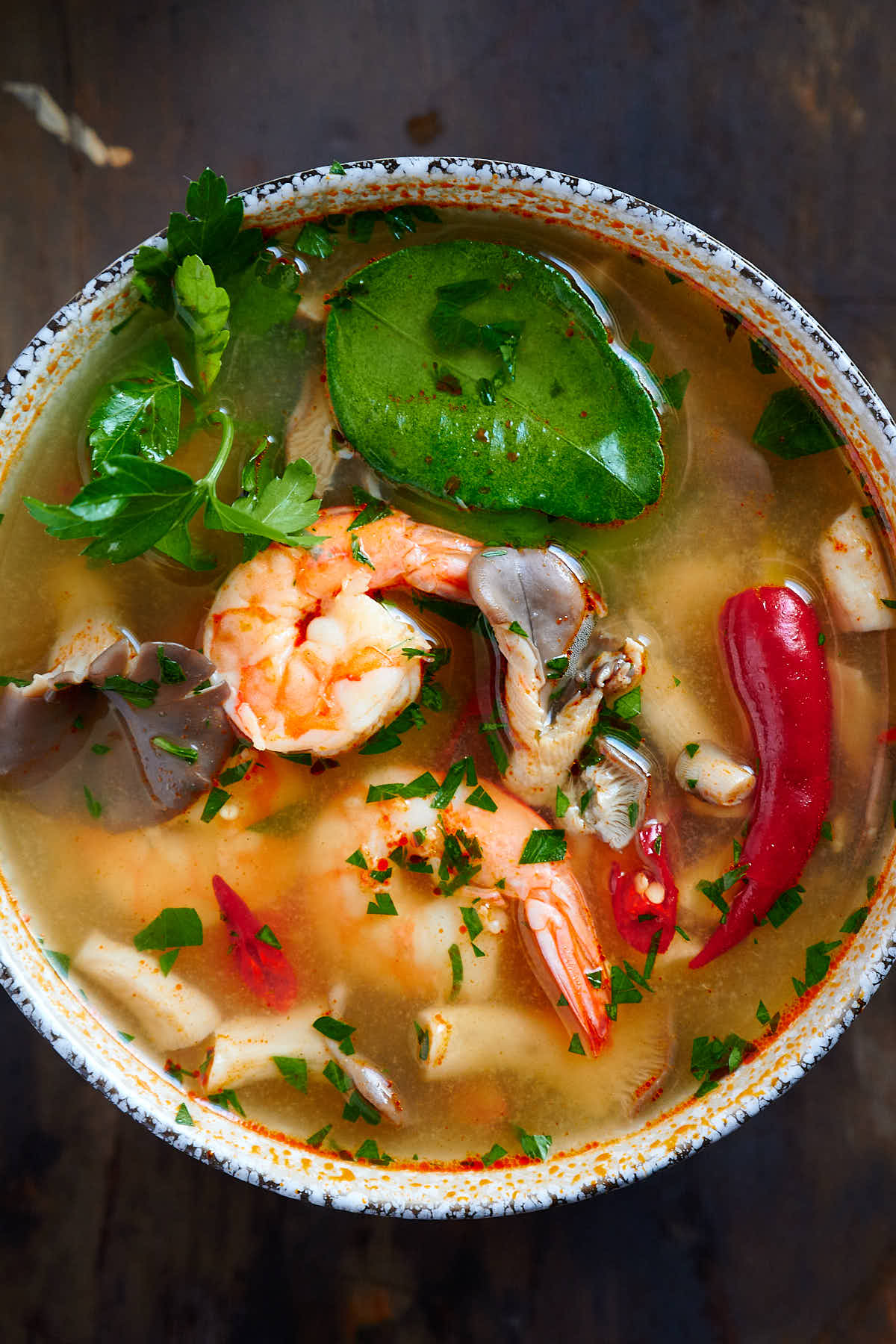
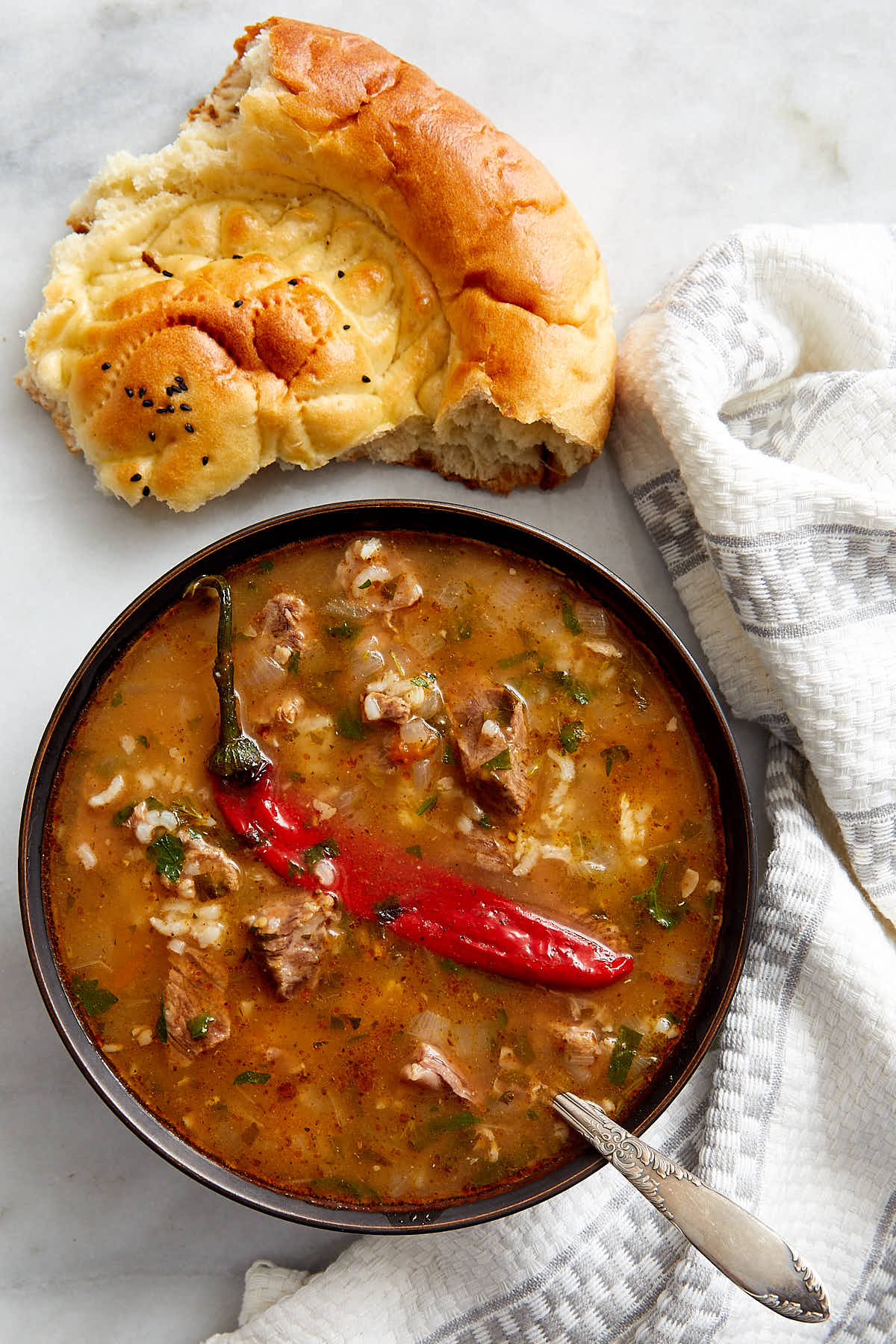
Sean says
Your recipe was the best out of 4 that I tried. Very authentic yet simple to make and delicious. Thanks for sharing.
victor says
Enjoy!